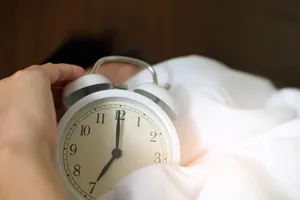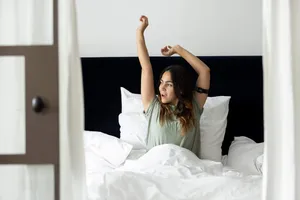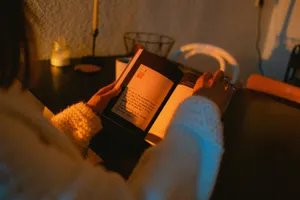Owl, lark, hybrid: What sleep types are there?
Dr. Christine Blume | 16.05.2023

The internal clock determines sleep: You should know how it ticks to sleep properly and stay healthy.
We like to sleep, and hopefully enough. But not everyone knows which sleep type they actually are. This is important. How we function during the day, when we get tired and should go to bed to wake up well-rested the next day, is determined by an internal clock. Knowing your sleep type is essential for better understanding and utilizing your sleep habits and needs. So: What sleep type are you?
Most common: The mixed type.
Simply put, there is a distinction between an early type, a late type, and a mixed type. These three “chronotypes” describe a – largely – genetically determined time preference for certain sleep and wake windows in a period that repeats itself. But not for everyone in the same length. For the early type, the period length is slightly less than 24 hours: This means the “larks” get tired a bit earlier because their internal clock “ticks” that way – in contrast to the late types, the “owls,” whose period length* is slightly more than 24 hours [3]. They get tired later.
The transition between the types is fluid. Most people are a mix of both without a clear sleep-wake preference. However, this also affects something during the day: the three chronotypes differ in organ activity, body temperature, hormone levels, and several other processes. [1, 2].
* Period length: A circadian rhythm is characterized by the period length of the internal clock. The period length refers to the time interval until a process repeats itself, is genetically determined, and is about 24 hours in the human sleep-wake rhythm.
Society oriented towards larks
Larks get tired earlier, should then go to bed, and wake up earlier. Owls, on the other hand, go to bed later to sleep a bit longer. Unfortunately, in everyday life, no one cares about my sleep rhythm, otherwise, the owls would show up later for work and still be at their desks when the larks are already going home. Society, with the typical work and school start at 8 a.m., is fundamentally more oriented towards early types. Late types have a disadvantage.
For owls who went to bed too late and have trouble getting going in the morning, an extra portion of daylight in the morning is recommended, for example, by walking. Light and movement have an activating effect. It can also help to calm down in the evening and avoid activating activities. Regularly getting up at the same time is also helpful. No matter what sleep type you are: It makes sense to identify individual peak phases and use them for demanding tasks and important projects. Less demanding to-dos and routine tasks can usually be done well in low phases [4].
sleep² tips:
- Observe yourself and find out which chronotype you most closely match, at what times of day you are most productive and powerful.
- Use the peak phases to tackle demanding tasks and move simpler tasks to the low phases. Also, take a break or do a relaxation exercise during energy lows. After that, you can certainly continue with fresh energy.
- Use daylight to adjust your internal clock and try to maintain a regular sleep rhythm.
Test sleep² now and learn to sleep better!
To the sleep² appSources:
- Merrow, M., Spoelstra, K., and Roenneberg, T. (2005). The circadian cycle: daily rhythms from behaviour to genes. EMBO reports, 6(10), 930-935.
- Cajochen, C., Chellappa, S., and Schmidt, C. (2010). What keeps us awake? The role of clocks and hourglasses, light, and melatonin. Int Rev Neurobiol, 93, 57-90.
- Roenneberg, T. (2012). What is chronotype? Sleep and Biological Rhythms, 10, 75-76.
- Roenneberg, T., Wirz-Justice, A., and Merrow, M. (2003). Life between clocks: daily temporal patterns of human chronotypes. Journal of Biological Rhythms, 18(1), 80-90.
More Articles

Sleep tracker for sleep analysis: What they offer and how you can analyze your sleep phases like in a sleep lab.
17.09.2023

Finally sleep well again: The best tips and routines for falling asleep
20.03.2025

Which four sleep phases does sleep consist of?
14.03.2024

